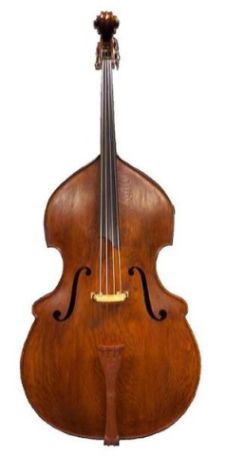
Contrabass
String InstrumentLargest and lowest-pitched member of the violin family. Also known as the contrabass, the double bass is usually about 1.8 m (about 6 ft) high and has four strings tuned to sound EE AA D G (EE = third E below middle C; G = second G below middle C) and notated an octave higher. A low fifth string is sometimes added, tuned to the C below the E string.
On some instruments the E string is extended at the head and fitted with a mechanism that clamps off the extra length; releasing the mechanism allows the string to sound the low notes down to C. Three-stringed basses were common in the 18th and 19th centuries (often tuned A D G) and survive in Eastern European folk music. Early basses of the 16th and 17th centuries had four or five (or, rarely, six) strings. Modern dance-band basses occasionally add a high fifth string tuned to the C above the G string.
Until the 19th century, bass players used bows with the stick out-curved in relation to the bow hair�long after the in-curved bow was standard for the violin, viola, and violoncello. The out-curved bass bow continues in use alongside two in-curved models developed in the 19th century. Virtuosos on the double bass have included Domenico Dragonetti, conductor Serge Koussevitzky, and the jazz bassist Charlie Mingus.
Read more on Wikipedia.